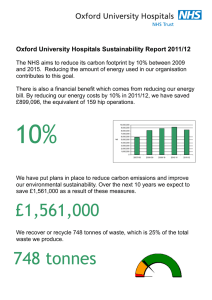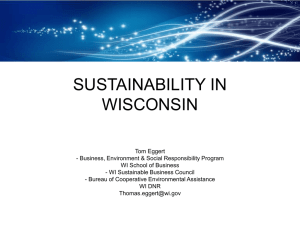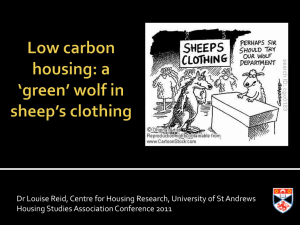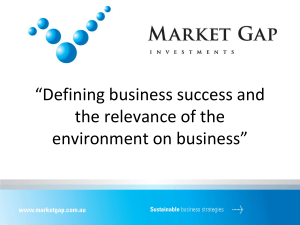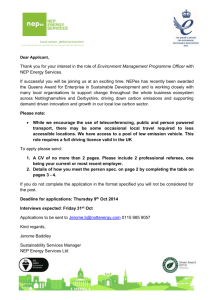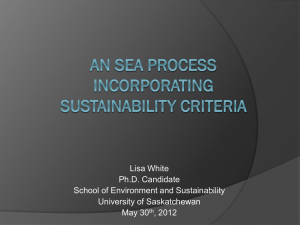Environmental Awareness: Staff Induction at Ulster University
advertisement
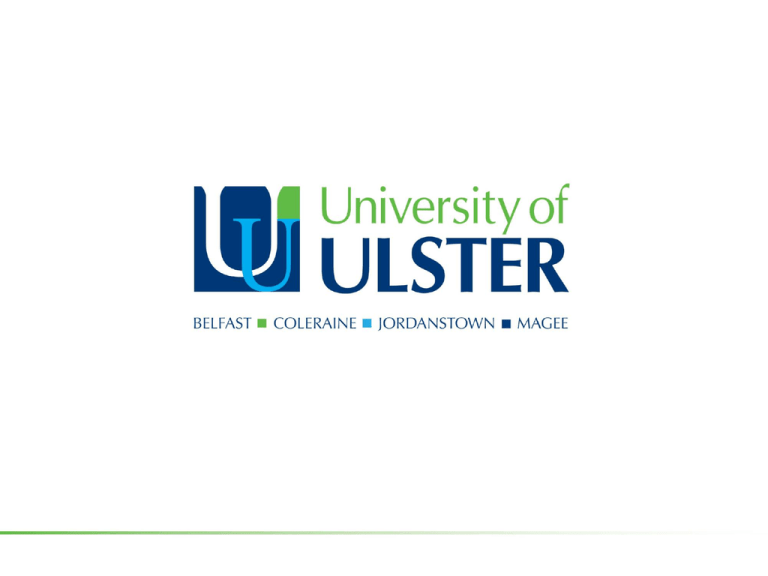
Staff InductionEnvironmental Awareness Environmental Sustainability Policy Statement The University’s Environmental Sustainability Policy Statement contains the following key commitments: To reduce, and where possible, prevent pollution To comply with all the relevant environmental legislation To continually improve environmental performance The Environmental Policy Statement can be viewed from the following link http://www.ulster.ac.uk/sustainability/docs/University%20of%20Ulster%20En vironmental%20Sustainability%20Policy%20Statement.pdf The University’s key environmental impacts Generation of waste (office paper, cardboard, packaging, general rubbish etc.) Use of energy and water (electricity, natural gas, oil, mains water) Procurement and use of supplies (office stationery, IT equipment, paper etc.) Staff and student travel- business travel and staff and students commuting to and from the University These are also your own individual environmental impacts when at work Examples of key initiatives underway to reduce environmental impact A full time energy officer position has been in place since 1995, demonstrating the University’s long term commitment to energy management A wind turbine generator was installed at the Coleraine Campus in September 2008. The turbine produces enough renewable electricity to satisfy approximately one quarter of the electricity requirement on campus. It reduces the University’s carbon emissions by approximately 800 tonnes annually The waste management contract for routine, non-residential waste which commenced in October 2009 has dramatically reduced the amount of waste being disposed of to landfill The University continues to invest considerably in more efficient systems and controls to reduce energy and water consumption, examples include •lighting systems with presence detection controls, which automatically switch off when there is no one in the area are installed throughout the University’s Buildings •the installation of an Automatic Monitoring and Targeting System to monitor energy and water consumption allowing more timely identification of opportunities to reduce consumption Ongoing sustainable refurbishment of the University’s buildings incorporating sustainable technologies and building materials e.g. the refurbished Warwick Building on the Belfast Campus incorporates best practice in sustainable design and construction and is an exemplar low carbon building. It includes tri generation combined heat and power (CHP), natural cooling, solar shading and grey water recycling. Headline figures For the period August 2012 to July 2013 Almost £4 million was spent on energy to essentially heat, light and power the University’s Estate, with £2.25 million spent on electricity £1.4 million on gas £80k on heating oil The University’s carbon emissions from energy use were approximately 17,000 tonnes 89,000 litres of mains water were used, at a cost of £265k Approximately 63% of the University’s waste was recycled, with a further 15% recovered (where the waste is converted into a fuel which is used in industrial plants e.g. power stations) Mileage claims by staff for business travel by car were based on a total of 1.8 million miles Carbon Management Plan 2010/11 to 2020/21 The Plan sets out a 10 year strategy to reduce the University’s environmental impact through the introduction of environmental improvement/ carbon reduction initiatives in the following impact areas Energy and water conservation Sustainable procurement Sustainable travel Waste reduction The University has established the following targets; a 28% reduction in its scope 1 & 2 carbon emissions by 2020/21, relative to a 2005/06 baseline; and a 19% reduction in its monitored scope 3 carbon emissions by 2020/21, relative to a 2009/10 baseline. Carbon emissions baselines The targets are very challenging. Staff and student participation in environmental improvement/ carbon reduction initiatives will be key to the success to the Plan The full Carbon Management Plan can be viewed from the following link http://www.ulster.ac.uk/sustainability/docs/Carbon%20Management%20Plan%20Final%2009%20June%202011.pdf Environmental awareness and communications strategy An environmental sustainability awareness and communications strategy is currently being developed for the University Its aim is to reduce the University’s environmental impact through the creation of a ‘Carbon Conscious’ culture amongst staff and students by encouraging the adoption of positive environmental behaviours The strategy is seen as an essential element of the Carbon Management Plan This staff induction session is one of the initiatives within the strategy Environmental awareness and communications strategy The strategy will be based around five key themes, which are related to the Carbon Management Plan Energy conservation Sustainable procurement Sustainable travel Waste reduction Water conservation Key messages to encourage positive behaviours will be presented within each theme How can you ‘do your bit’ when at work to reduce the University’s environmental impact Be aware of the environmental impact of your daily activities at work Make a conscious effort to minimise and segregate waste recycle where facilities are available reduce paper use by photocopying on both sides, and reading and/ or archiving documents electronically Make a special effort to save energy and resources. For example, switch off equipment when not in use (in particular lights, computers, chargers and projectors) Consider reducing the environmental impact of commuting to work by car sharing or using public transport Instead of travelling by car to attend meetings, consider using the University’s video conferencing facilities For more information, please visit the University’s sustainability web pages www.ulster.ac.uk/sustainability


